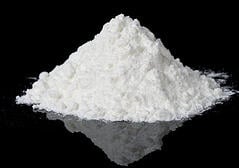If you’re a laboratory that’s processing drinking water samples using solid phase extraction, you’ve inevitably gotten to the step in your procedure where you’ve eluted your analytes from your SPE media, and you find yourself saying “How do I dry my extracts?”
What’s the best way to dry my extracts?
This is a question we get quite frequently and it’s a reasonable question to ask. Unfortunately, the answer is – it depends. Solvent drying (not to be confused with solvent evaporation) is an important step in your extraction process when you’re using organic solvents to elute your target analytes. Residual water in your solvent can cause issues if your target analytes extract back out of the solvent and into the water while you’re trying to evaporate or analyze your sample. Water can also damage your chromatography system, so if you’re quantifying your extracts by GC/MS or LC/MS, you want your solvent extracts to be dry prior to analysis.
So, given the importance in solvent drying, I thought I’d share some of the commonly asked questions that come up under this topic.
Q: I’m processing my samples against EPA Method 525.3. Does it matter how I dry my extracts?
A: If your lab is being audited against EPA Method 525.3, you need to dry your extracts per the recommended procedure – in this case, sodium sulfate. Make sure you purchase the recommended grade of anhydrous sulfate and store it appropriately.
If your lab processes a large volume of samples, you may have sought out alternative approaches to solvent drying, such as phase separation membrane. While sodium sulfate is readily available for purchase in bulk quantities and is pretty easy to learn how to use, it has some potential downsides to it.
- -It has to be dried and carefully stored, which is
 time-consuming and requires you to have adequate drying and storage equipment
time-consuming and requires you to have adequate drying and storage equipment - -It has to be disposed of as hazardous waste
- -It’s a chemical that dries your solvent by reacting with water to form a hydrated salt, which means it can retain some of your target compounds (particularly those that are highly water soluble)
- -It can contaminate your extract, particularly if it’s stored incorrectly or purchased at a lower grade than is recommended
- -It can be saturated. What that means is, if you didn’t calculate the mass of sodium sulfate you needed, given the volume of water you needed to remove, you could exceed the capacity of the salt and end up with a solvent that’s not completely dry
-Phase separation membranes physically separate the water from your solvent, which eliminates all of the challenges you face with a chemical drying agent such as sodium sulfate. Plus, it’s compact and easy to store, intuitive to use and easy to dispose of.
There are a handful of benefits to using a phase separation membrane over sodium sulfate – just make sure you check the method you’re following and adhere to the drying method outlined there (if there is one). Check out the method summary in this app note for an example protocol that adheres to EPA Method 525.3 guidelines.
Q: Since EPA Method 525.3 specifies that I use sodium sulfate, can I put sodium sulfate on top of phase separation membrane to dry my extracts?
A: While clever, this is an idea that you would want to run past your auditor first. Since the method specifies the use of sodium sulfate but does not specify the physical separation of water (using a phase separation membrane, for example), physical separation isn’t forbidden, but it’s also not specifically allowed. Yep, this one is a gray area so have a conversation with your auditor before cleverly devising a drying setup that includes both chemical and physical solvent drying.
Q: I’m running samples against EPA Method 525.2. Do the same rules apply to me?
A: Yes. As with Method 525.3, this method specifies the use of sodium sulfate.
Q: I’m not processing samples against an EPA Regulated Method and my protocol doesn’t specify a protocol for extract drying. What should I do?
A: If your lab is not reporting results against a method  that specifies an extract drying method, you should have the option to decide whether you want to dry your extracts using physical or chemical separation (double check your laboratory’s established protocols to make sure your SOP allows you this flexibility).
that specifies an extract drying method, you should have the option to decide whether you want to dry your extracts using physical or chemical separation (double check your laboratory’s established protocols to make sure your SOP allows you this flexibility).
If this decision were up to me, I’d order myself a huge stack of DryDisk® Disks and wave goodbye to sodium sulfate forever!
Do you prefer physical drying over chemical drying? If so, let us know in the comments and share this post to spread the word!
Download the application note on Extraction of Semi-volatile Organic Compounds in Drinking Water with new SPE Disks in Compliance with EPA Method 525.3

